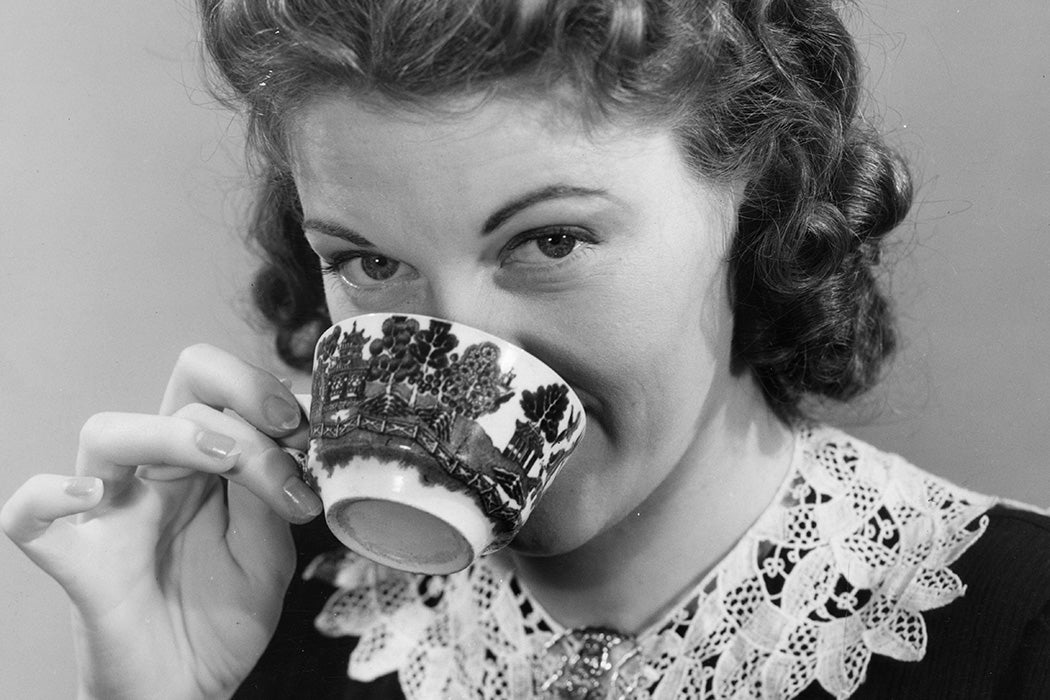In the late nineteenth century, rich American women engaged in a new kind of tourism: china hunting. They knocked on doors and scoured antique shops, met in clubs to discuss antique china, and dined in triumph on their finds. But the popular practice was about more than plates, writes J. Samaine Lockwood: It was an exercise in anxiety over a changing United States.
Lockwood calls the china-hunting craze a “historically minded, elite effort to ground the nation’s values in a hallowed past and, in so doing, lend stability to a post–Civil War America increasingly besieged by market forces and flocks of immigrants.” The practice had been around since the country’s founding, and in the early nineteenth century it was driven by collectors who cared about historic preservation and “cultural nationalism.”
The niche work of preservation became a widespread passion in the years after the Civil War. Driven by the nation’s centennial and the advent of widely available mass-produced goods, china collecting became even more popular. Among its proponents, Lockwood writes, were members of new clubs like the Daughters of the American Revolution, who collected in the hopes of “[countering] the forces of modernity.”
The new historic preservation movement was as concerned with who didn’t participate as much as who did. As immigration picked up, driving urbanism and ethnic diversity, china collecting became a site of backlash. Insistent on the supremacy of white, upper-class Americans, collectors fashioned themselves as the rescuers of American heritage, “its heroes on a mission that asserted their class and ethnic status.”
Collectors used antique china—often manufactured in England—as a way of aligning themselves with “Englishness” and thus whiteness. Family heirlooms were a way to prove their family’s long tenure in the United States and their imagined ascendant claim to Americanness. They also purchased used china in rural New England, which became a tourist attraction for collectors who saw it as “an enclave of ethnic and national authenticity.”
The act of trying to purchase china ran counter to images of women as retiring and confined to hearth and home. “The activity seems to defy woman’s prescribed role in the home, as leisured women invade strangers’ households and use their wiles in persuading unwitting farmers to part with their ceramics,” writes Lockwood. Other women shopped in antique stores and joined collecting clubs.
Weekly Newsletter
Lockwood uses the writing of Annie Trumbull Slosson and Alice Morse Earle, china hunters extraordinaire, to explore collectors’ preoccupations and perceptions. Both painted women as superior to male collectors, exhibiting “an unfeminine daring” that was worth it to save the nation (and the rural people from whom they bought their china, an act they painted as munificent and charitable).
Their romanticized view of china pushed back against mass production and industrialization, painting old tableware as a way to recapture history, aesthetic pleasure, and authenticity. It also masked a desire to be seen as professional, capable, and important—qualities that, poignantly, could only be accessed through domestic pursuits. But the energetic pursuit of china was in service of the broader task of solidifying divisions across class, regional, and racial and ethnic lines. For anxious china hunters, finding an antique plate or pitcher felt even more triumphant because of who was not invited to dine on them.
Support JSTOR Daily! Join our new membership program on Patreon today.







